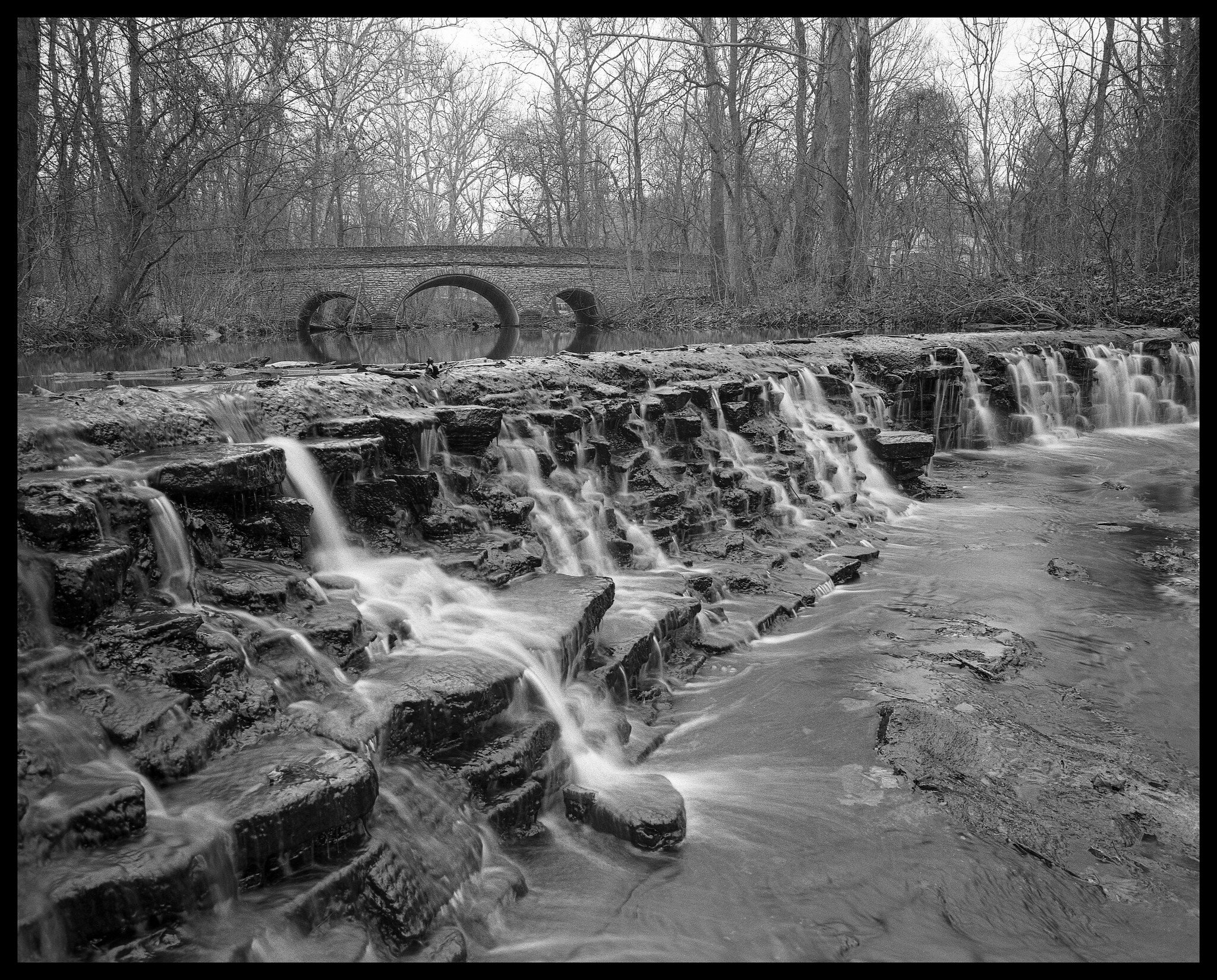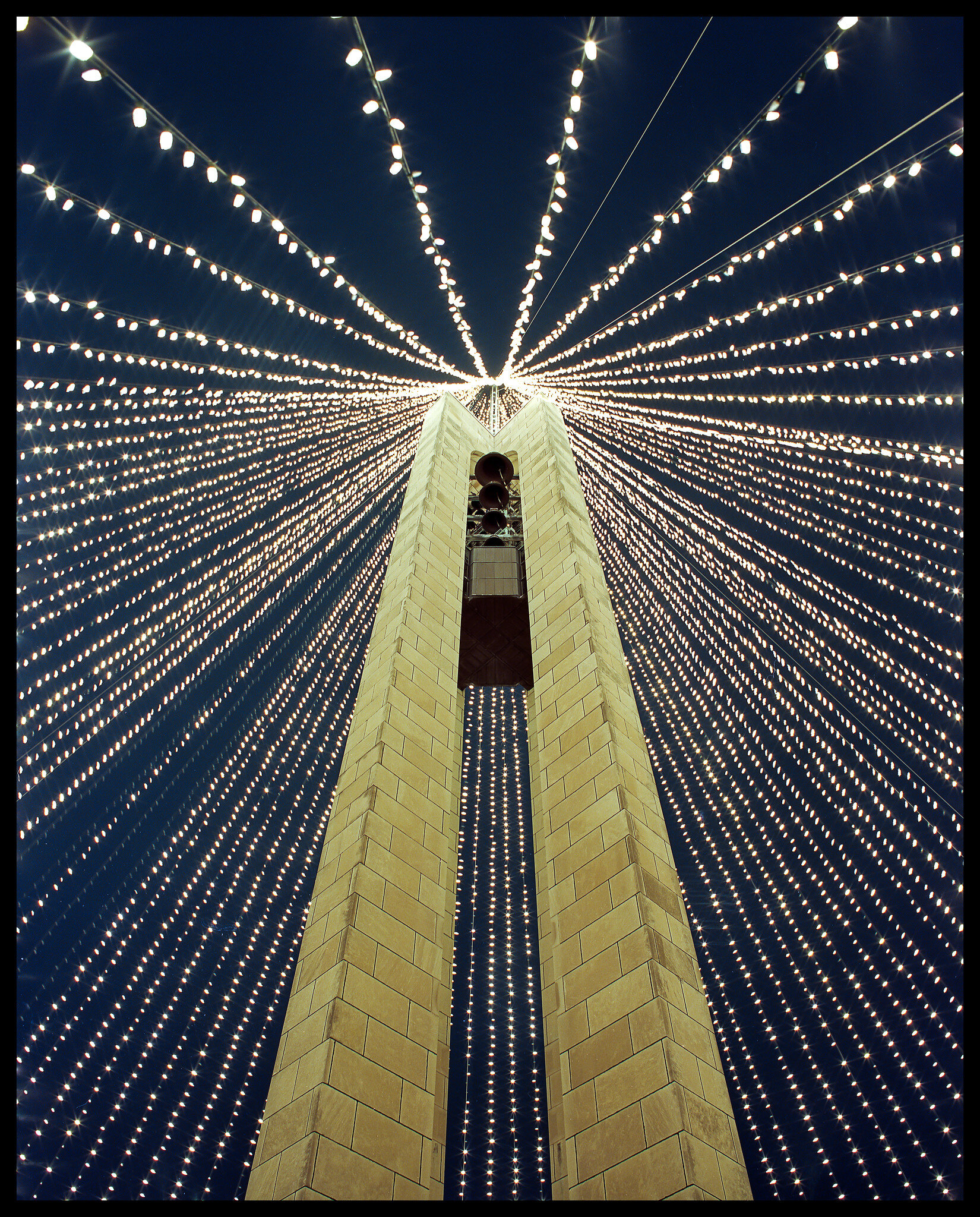Camera Review: The Dora Goodman Zone 3D-printed camera
"Because he's the hero Gotham deserves, but not the one it needs right now. So we'll hunt him, because he can take it. Because he's not the hero. He's a silent guardian, watchful protector. The Dark Knight." -Commissioner Jim Gordon
The above might seem an odd quote to read at the beginning of a camera review, but bear with me.
I mean, yes, I do LOVE The Dark Knight movie and can quote many of the lines verbatim, and have been looking for an excuse to work a quote or two into some of my posts. So guilty as charged there. But I do have two other reasons for why it fits.
First – the Zone just looks like something out of The Dark Knight props department. Right?
Dora Goodman Zone in my 35mm Panoramic set-up. Note that since I shot this image I’ve replaced the mask on the viewfinder with a nicer 40mm cap that I cut a nicer opening in.
Second – and more importantly – this is a camera that wasn’t on my radar in terms of gear wants/needs, but due to a series of events I found myself ordering. Is it the camera that I deserve, and not the one I need? Let’s dive into that now.
Its no secret that I love shooting panoramic images. If you look at my images for sale you will see a LOT of panoramas. Generally I shoot them with one of two different set-ups. The big kit is the Fuji GX617 that makes a huge 6cmx17cm negative, and the “smaller” kit is my Mamiya RB67 ProSD with a 220 back, custom mask, and adapters to shoot a “doublewide” image on 35mm film. Both kits can be restrictive to use in the field; the GX617 is heavy, and the entire kit is worth more than my wife’s current car, while the RB67 is not quite as valuable but every bit as heavy and unwieldy.
In November 2020 Emulsive ran an article by Jess Hobbs about the “Presspan” made by a small one-man company named Trastic. The Presspan is a 35mm Nikon camera that’s been modified to shoot a large negative using 3D-printed modifications and a Mamiya 50mm Press lens and viewfinder. This looked to me like a great solution for shooting panoramic images in a “lightweight” small format – at least compared to what I’ve been used to. The 50mm lens is nearly perfect for that application; it’s the lens length I most frequently have on the RB67 to shoot 35mm panos, and somewhat equivalent to the 105mm lens I use often on the GX617.
I immediately contacted Freeman at Trastic via email and told him I wanted one, and that I was ready to send money for a deposit for the build. While waiting for his response, I found and purchased a mint 50mm Mamiya Press lens and viewfinder on eBay to use on the Presspan. Freeman eventually responded stating that he was busy and that he would get back to me later. I replied asking if I could at least send him a deposit to hold my place in line, but he wasn’t taking one at that time. This is understandable for a small, one-man operation whose primary occupation, I would assume, is not making custom one-off panoramic film cameras. So I was willing to wait. The 50mm lens and viewfinder arrived while I was waiting, and languished for a while in a box on the shelf.
On Thanksgiving weekend someone made me aware that Dora Goodman Cameras was running a 40% off sale for their 3D-printed medium format cameras, so I took another look at their website. I was familiar with their products and also follow them on Instagram. Their Goodman Zone camera uses the Mamiya Press lens mount and viewfinder, coupled with a Mamiya RB67 back. Since I had the 50mm lens, viewfinder, and several RB67 backs I pulled the trigger and ordered one. I wasn’t really interested in completely building it myself so I ordered the option of letting Goodman assemble it to the point where all I needed to do was put the lens, viewfinder, and back on.
Goodman Zone on the left, Mamiya RB67 ProSD on the right.
The Zone camera arrived about a month later during my Christmas break. Great timing! I spent some time that night putting my strap, lens, viewfinder, and back on. I also made a quick mask for the viewfinder so that I could only see what’s between the holes on 35mm film for panoramas. The complete camera, loaded with film, weighed in right at 3lbs. The same 50mm lens configuration with WLF, film, and no strap on the RB67 ProSD weighs 6lbs. Add in the mirrored prism and its closer to 8lbs. Plus the Zone is about half the size of the RB67.
I loaded it up with a roll of 35mm Tri-X the next morning and headed out to shoot while hiking with Renee. The result? Lots of light leaks. No surprise there. I was prepared for the fact that this was going to be a bit of work to make the Zone into something that could even be close to replacing my RB67 for panoramas. Upon examination I figured out that I didn’t have the lens fully seated into the body, and that was because one of the pre-installed top accessory bolts was just too long and cracked/bulged part of the plastic in the mount area, keeping the lens from fully seating. A bit of Dremel work later and that was done. I then taped up some of the inside with gaffer tape where the bolts stuck in, and also replaced some of the light seals on the back to be a little thicker and “squishier”.
I took it out again with a roll of HP5+ the next day and ---- success! It was a very foggy morning, and most of the images weren’t “sharp” - but I wasn’t certain if that was atmosphere or the camera.
I took it out again a few days later on a snowy hike at Grant Park with Renee. Everything looked good – sharp, no light leaks, no surprises.
I’ve now put a few rolls through it since – both in 120 and 35mm panoramic format. Additional modifications I’ve done through lessons learned while using:
Painted the inside of the camera with matte black chalkboard paint – this was because the 3D printing is very shiny and causes light to bounce around a bit on long night-time exposures. I didn’t want to attempt to sand it for fear of long-term dust/grit issues – plus the area is too small to get my fingers and sandpaper in there – so the paint made the most sense.
Added some shims by way of gaffer tape to the cold-shoe mount – this was because the Mamiya Press viewfinder had a bit of wobble when mounted in the cold-shoe – even with the lock on the viewfinder screwed down. It could lean a few degrees to the left or the right. I found this out after a few images had crooked horizons. This really isn’t the Zone’s fault – I think it has more to do with the way the viewfinder is made.
So now that I’ve been shooting with it for about 5-6 weeks, here is my take on the Pros and Cons.
Pros:
Very lightweight and compact
Good looks
Price was very good, especially with the Thanksgiving/Black Friday sale
Mamiya lens and film back
Mamiya users will feel right at home with the great glass and how the controls are laid out on the lens
RB67 ProS back is versatile in regards to shooting 120 or 35mm panos – even though the back shell is screwed to the camera body with 4 Allen bolts, the inner cartridge can be swapped between a 120 and a 220 (works best with 35mm film) easily.
Good support from Goodman in regards to many vids on YouTube and info on their website, along with an active group on FaceBook
Nice little storage area in the grip – the top cap and/or bottom cap screws off to reveal a hollow compartment. I keep a spare AA battery for my light meter in there along with some folding money just in case.
Lots of accessories – I purchased the grip, phone mount, strap lugs, coldshoe with built-in level, and pinhole lens
For those who can print 3D, its open-source. Meaning you can print your own body and accessories
Cons:
The protruding screw that damaged the lens mount area and caused issues with mounting the lens properly was a pain
Missing 2 screws for the lens mount collar – I robbed two that fit from the pinhole lens so I made it work
Light leaks on initial use
Grip storage area is just a little too small in ID to fit a roll of 120 film – this would have been an awesome touch
Same-side mounted strap lugs on the left side means that the camera hangs sideways with the handle facing down – its taken a while to get used to reaching under the camera to grab the handle to bring it up to shoot, instead of grabbing the viewfinder by accident
The Mamiya Press 50mm lens, while being a great piece of glass, is slow. 6.3 is its widest aperture, meaning on cloudy or dim days don’t try to shoot with anything less than 400 speed film hand-held. This isn’t really any fault on the part of the Zone body, and would have been the same problem with the same lens on the Presspan. Mostly I use it for landscape panoramas anyway, so it spends the majority of its life on a tripod.
I like to tinker with things and have taken apart and repaired many cameras over the years, so the “Cons” list above isn’t a big deal to me. Film cameras can have their quirks – old or new. Its not like buying the latest Sony or Nikon Z-A76R2D2 – one shouldn’t expect perfection.
So, is this the camera I deserve, and not the camera I need right now?
I think that if I can state that this camera ticks off all of the boxes for why I wanted the Presspan to start with, then I could say it’s the right camera for me. It does offer more flexibility over the Presspan in regards to being able to shoot Pano’s with the 35mm adapters and mask, while still being able to shoot 6x7 when I want to with the same camera. It appears to be larger than the Presspan, but not having one of those in front of me I can’t tell if they weigh the same or not.
For now I think I don’t have a definitive answer – I’m still going to buy the Presspan if Freeman ever takes my money. I did contact him again earlier this month, and was again told that he’s busy - so I’m still waiting. Once/if I have the Presspan I can spend some time with it as well, and ultimately give a fair assessment.
Until that day comes, though, I’m happy to keep using the Zone.
Thanks for reading! Please feel free to reach out if you have any questions.
Jeremy











